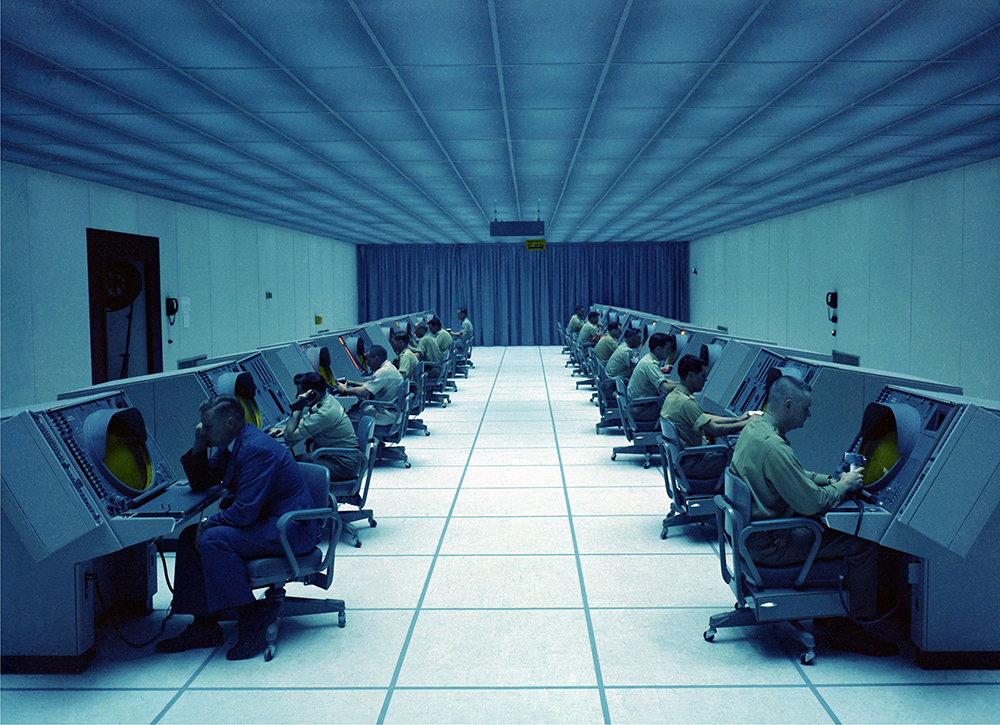
(From RCAF History)
The Canadian Forces Base (CFB) North Bay was a large part of the NORAD aerospace defense program during the Cold War. The part of the base that will function as the focus of this article is the underground complex of the base built 60 stories beneath the main air force base and built to withstand a 4-megaton nuclear explosion (RCAF History, 2017).
(From Wikipedia)
The base is in North Bay, Ontario just North of Lake Nipissing. Originally in 1938, the area was opened as an airport. Later, in 1951 due to the buildup of Canadian air defence material at the location, a Royal Canadian Air Force (RCAF) station was formed there. Later after NORAD was formed, NORAD organizers became concerned over “the fact that all [communications] terminated at one spot — the NORAD COC in Colorado Springs” (3, 33), and wanted to develop a regional headquarters in Canada. After considering an RCAF proposal to build a hardened facility underneath the current North Bay base they moved forward with that plan. The proposal planned to build a bunker underneath the base because of the large deposit of 2-billion-year-old granite located there. Construction commenced in 1959 and was deemed complete in 1962 and began supervising the Canadian effort to protect North American airspace (5, 56-58).
Affectionately known as “the hole” the base is built underneath the mountain overlooking North Bay. The complex is housed in two caverns carved out of solid granite. The base holds facilities to support four to five hundred people. These facilities also allow it to operate independently for exercises of simulated warfare or fallout exercises. During this time the massive door to the base is closed and they exercise a process called “buttoning up” (4, 1). The base itself is in the shape of a squared-off number eight three stories tall situated in one of the caverns. The other cavern housed the emergency power system and some other equipment for life support.
The bottom of the three-story building housed two large AN/FSQ-IBM computers, nicknamed ‘Bonnie’ and ‘Clyde’ (5, 60). These computers made up the heart of the SAGE computer system at the base. The SAGE system was one of the greatest achievements of NORAD functioning as a massive computer system to coordinate and track all the air traffic over North America to watch for any foreign bombers. Essentially functioning as a wide-scale air traffic control system. “in fact, for many years ATC [air traffic control] terminals looked exactly like SAGE terminals” (6, 55) and functioned in a similar matter. This computer system was what the base was built to manage as, without it, it would have proved an impossible task to watch all the air space over North America.
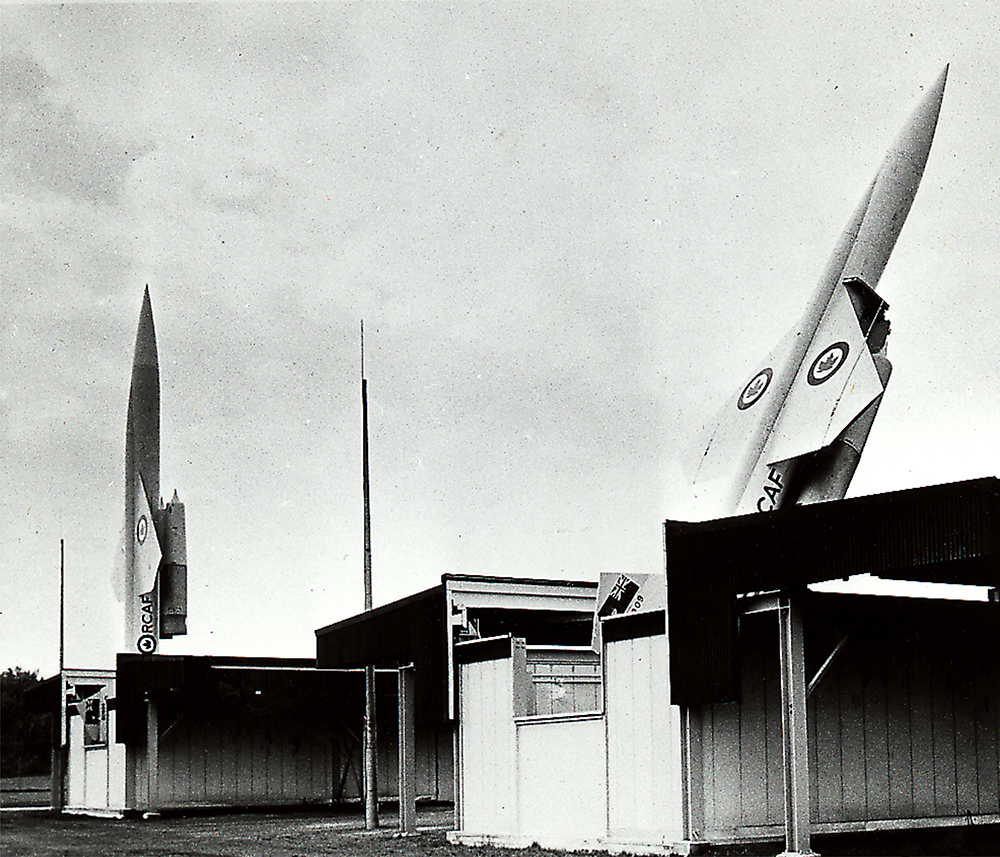
(From RCAF History)
The North Bay base itself also played host to other systems vital to the air space defence effort in Canada. The RCAF section of the base hosted several CF-105 interceptors that were Canadian made aircraft to function on a similar level to the American F-106 interceptor used in American air defence. The CF-105 was made to carry the same weapons as the F-106 to allow for nuclear weapon capability. The preferred medium-range weapon for this interceptor was the BOMARC B which was an adjustable yield atomic warhead. Plans were made to store these warheads at North Bay and only a few other locations as the presence of nuclear weapons inside Canada was a contentious issue.
Base Systems
The systems in place at North Bay in the subterranean bunker were for the most part split into two distinctions. Those systems that supported the environment that ensured the wellbeing of the people working in the facility, and those systems dedicated to the ongoing operations air defence operations. Sometimes these systems intersected and served both functions, but this classification will serve to help explain the systems in place.
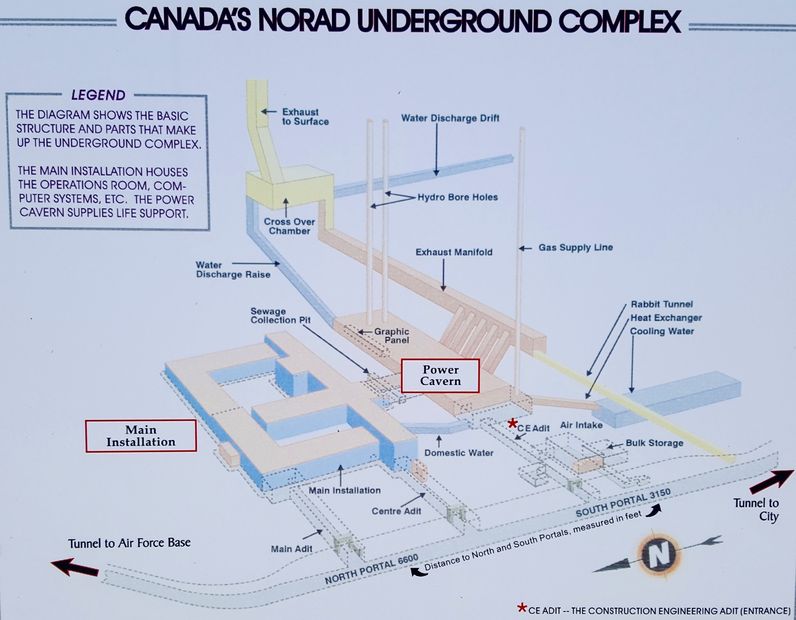
(From Fort Wiki)
One such system in place to support the massive SAGE computer system was the elaborate water-cooling system to dissipate the built-up heat from regular operation. The water was pumped in from the nearby Trout Lake at a rate of 1.6 million gallons a day. After passing through a heat exchanger to absorb the heat it goes to the cooling water basin to wait to cool off. The cooling basin resides in a separate cavern from the rest of the facility and holds 5,000,000 imperial gallons of water. After going through the heat exchange system, the water is then pumped back into the lake in the same condition as it was, with a few degrees increase in temperature (4, 235).
This water-cooling system functions to support ongoing operations in the base and the SAGE system also helps to support the facility personnel as well. A small portion of the water on the intake is passed into two reservoirs with a combined capacity of 150,000 gallons. This water is then passed through several filters to then be used by facility personnel. This system then functions to support both aspects of the facility, and as with all the systems to be discussed is subject to weekly inspections to ensure the continued operation of the systems with minimal problems.
The noise safety system in the North Bay bunker is one system that is often neglected when considering the safety of personnel of the facility, but with six generators operating to produce power for the facility that is a large amount of possible noise. Regular surveys are performed using sound survey meters around various locations around the facility. The normal operating noise for facility personnel was recorded at an average of 95 decibels but occasionally reached as high as 115 decibels (4, 235). This is deemed safe for continued contact. In other areas measured to have higher noise levels noise protection equipment is given to the personnel of that area and limited in the amount of time spent in that area.
One of the systems that generated noise at an acceptable level was the ventilation system. Ventilation was a major part of supporting the well being of facility personnel and supporting power generation. As 55% of the air passed through the particle filtration is passed to the power plant to be used for combustion by the six electrical generators. The remaining 45% of the air is then heated to room temperature, washed, and receives a humidity treatment before being passed into the operations building. Placed throughout this system are a collection of carbon monoxide (CO) detectors. All this air is brought in through the south tunnel by three giant suction fans. The north tunnel, on the other hand, it used as an exhaust for the used air, fumes, and vapors (4, 235).
SAGE System
(Fallout Shelter New York)
While other systems in place at the CFB North Bay facility were important, none were more so than the SAGE computer system which is what the base was built to house. This was a computer system built in the 1950s, so it is very different from a conventional computer system of today. The system had over 58,000 vacuum tubes to maintain its surveillance of the NORAD regions (5, 60). Due to the proximity to the enemy, the system underwent frequent readiness exercises to simulate heightened world tensions or actual wartime conditions. Because of this even though the system never actually needed to prevent a nuclear attack it was always in a state of readiness to respond to a nuclear attack.
The SAGE system itself was a first-generation computer made by IBM with the name AN/FSQ-7. The computer was built with ambitious specifications of “55,000 vacuum tubes, 135,000 diodes, 13,000 transistors, 7000 pluggable units, 12 drums, all of that core memory, and still 99.83 percent availability as a simplex and 99.97 percent as a duplex” (1, 403) to be a reliable computer system. And the reliability can be seen that this computer that was installed in 1962 wasn’t replaced at North Bay until 1982. It was the last SAGE system in existence to be removed and replaced, but in all that time the SAGE system continued to effectively carry out its mission.
As this was a first-generation computer it functioned in a rather different manner than a conventional computer of today. The input and output (I/O) of the machine was done through the insertion and removal of drums. Those drums where on a specific I/O channel that was then directly loaded into the computer’s memory state. When running at full-duplex (receiving and transmitting at the same time) it drew one megawatt of power. This may sound archaic to many modern readers, but this wonder of computer architecture resulted in countless patents for different computer parts.
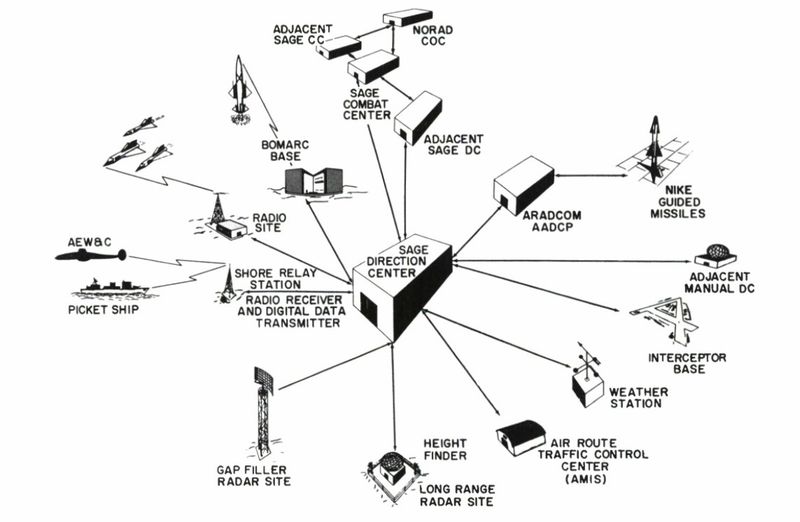
(From Fort Wiki)
The mission of tracking all planes in North American airspace was done by several radar sites sending information about the altitude and heading of all the planes they can detect. The SAGE system compiled that information and cross-check it with information about what planes were supposed to be in the sky and when. An operator’s console at the SAGE system would then “plot the terrain and targets according to operator switch requests” (2, 119). The computer sends the information to be plotted on a phosphorus screen powered by an old style of cathode ray tube called a Hughes Charcatron. To run the SAGE system, it ran on a custom operating system called 1Mword that was written in assembly language and Jovial and was stored on 728 tape drives and drums.
This style of computerized air defence measures was a new way of communicating information between stations as the prior air defence systems used by the US relied on human operators to perform calculations and to communicate with each other by voice, face-to-face, or over the telephone. The SAGE computer system was the next step in creating an effective air defence system (8, 41).
Maintaining the SAGE system at North Bay was another big part of the work that was done there. After all, you can’t track all the air traffic above Canada if the computer doing that falls apart. Along with the personnel that was dedicated to maintaining the systems of the facility as mentioned previously there were three permanent people at the facility working on software updates for the system. These three oversaw maintaining the software after the initial 100 people that installed and set up the maintenance of the SAGE system departed.
This maintenance all paid off in the end as the SAGE system became a very reliable and tough computer. The structure of the system on it operating on a round-robin style of tasks scheduling where it runs on a central loop and checks all the inputs for new data on each iteration of the loop. This is different from the more common computer architecture of today which is interrupt based on incoming tasks sending an interrupt signal to the CPU telling it to focus on this incoming task and set aside what it was doing. There certainly are arguments to be made for either architecture, but what can be said is that the round-robin architecture is more reliable and less buggy. This created a better situation for the SAGE system and allowed it to function smoothly continually. It managed tasks so well that “with one computer, availability is 99.83 percent and with duplex operation, availability is 99.97 percent” (2, 119). So, it could be said that the SAGE system was always running at maximum performance.
Legacy of SAGE at North Bay
It is hard to determine how useful the SAGE system was at North Bay, as in its 20-year operation it never picked up any planes from the Soviet Union. Is that how the success of an air defence system is measured though, or it is in how much it deterred against any possible bomber attacks. Even if it could deter against those attacks there was little that could be done about ICBMs (Inter Continental Ballistic Missiles). These missiles were developed in the late 50s and by the time the SAGE system was installed at North Bay they were widespread on both sides. Due to how fast an ICBM is there is little warning time before they strike and almost impossible to shoot down. The SAGE system was only capable of tracking and preventing attacks from manned bombers (6, 54).
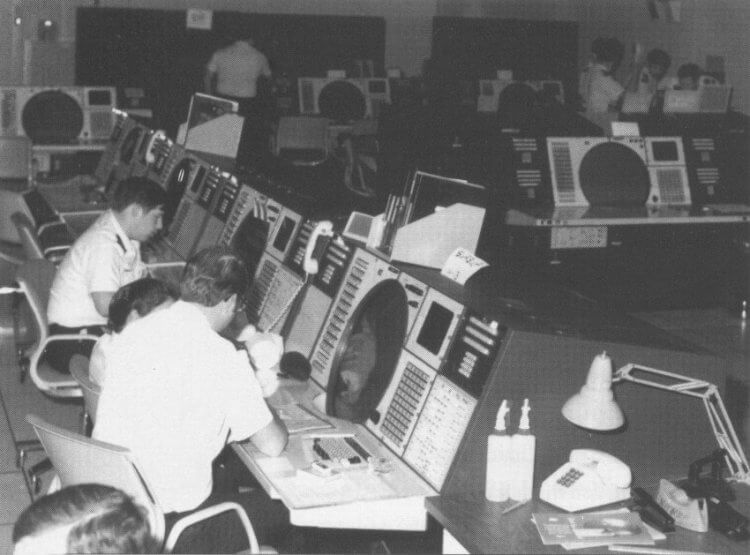
(From Mysteries of Canada)
Despite the SAGE system failing in combatting all forms of nuclear annihilation, it had an enormous impact on the development of computing in the 20th century. The SAGE system was one of the earliest computers made in the US and led to lots of new developments and technologies. Its development paid off in the “creation of a unique U.S. computer and communications industry that has generated hundreds of billions of dollars in value” (6, 54). It led to advancements in interactive CRT displays and light pen technology that eventually lead to the creation of the mouse. SAGE brought innovations in ferrite core memory, modems, database management, distributed processing, time-sharing, component failure checking (intelligent devices), memory cycle stealing, I/O buffers, shared memory between subroutines, and a large-scale system executive consisting of 500,000 lines of code. The SAGE system can’t just be measured in what it did, but what is inspired and helped to create.
SAGE eventually was replaced by a new early warning detection system called TRACE (Transportable Automated Control Environment). This new system functioned on different principles to prioritize survivability and flexibility. It replaced the current 22 SAGE sectors with nine TRACE sectors across the US and Canada. Each sector hosted several NORAD Control Centers (NCC). Each of these TRACE NCC’s “would be transportable, moving its computer, display, and communications equipment around on a random schedule to three or four pre-scheduled and prepared positions within its area in four 8-by-10-foot vans” (3, 61). This mobility would, in theory, increase the number of missiles required to destroy an NCC facility. These NCC’s would also function as the primary air defence system and replace the SAGE direction centers. In this model, the North Bay facility would still function as one of four NORAD region headquarters in this new system, and due to the hardened facility wouldn’t have to be as mobile as the other NCC’s. After this transition was fully implemented the SAGE system was finally retired in 1982.
Takeaways

(Legion Magazine)
In the end, the SAGE system in place at the CFB North Bay facility served as an important part of the history of the Cold War. It served its purpose of deterring any potential nuclear attacks by detecting them early and allowing for interceptors to stop them. Its purpose had failings within it though as it had no way to combat the threat of an ICBM, but in the end, it still allowed for the betterment of the computer industry and advancements in technology. And even after the retirement of the SAGE system, the CFB North Bay facility was still able to be used to protect North American air space from the threat of nuclear war.
Primary Sources
- Tropp, Henry (1983). “SAGE at North Bay”, Annals of the History of Computing Vol. 5 No. 4: 401-403
- Bell, G. (1983). “The computer museum member’s first field trip”, Communications of the ACM Vol.26 No. 2: 118-119
- North American Air Defense Command and Continental Air Defense Command. 1963. Historical Summary July-December 1962. [Colorado Springs, CO]: Directorate of Command History Office of Information Headquarters NORAD/CONAD.
Secondary Sources
- Waddleton, J.T. (1971). “A Study of the Working Environment of the Semi-Automatic Ground Environment (SAGE) Complex, Canadian Forces Base North Bay, Ontario“, Canadian Journal of Public Health Vol. 62 No. 3
- Wilson, Gordon (2011). NORAD and the Soviet Nuclear Threat: Canada’s Secret Electronic War. Toronto, Canada.
- King, John (2010). “Project SAGE, a Half-Century On.” University of Michigan.
- Crosby, Ann (1998). Dilemmas in Defence Decision-Making: Constructing Canada’s Role in NORAD. New York.
- Hughes, Thomas (2001). Rescuing Prometheus (Baltimore: John Hopkins University Press), 15-67
Further Reading

